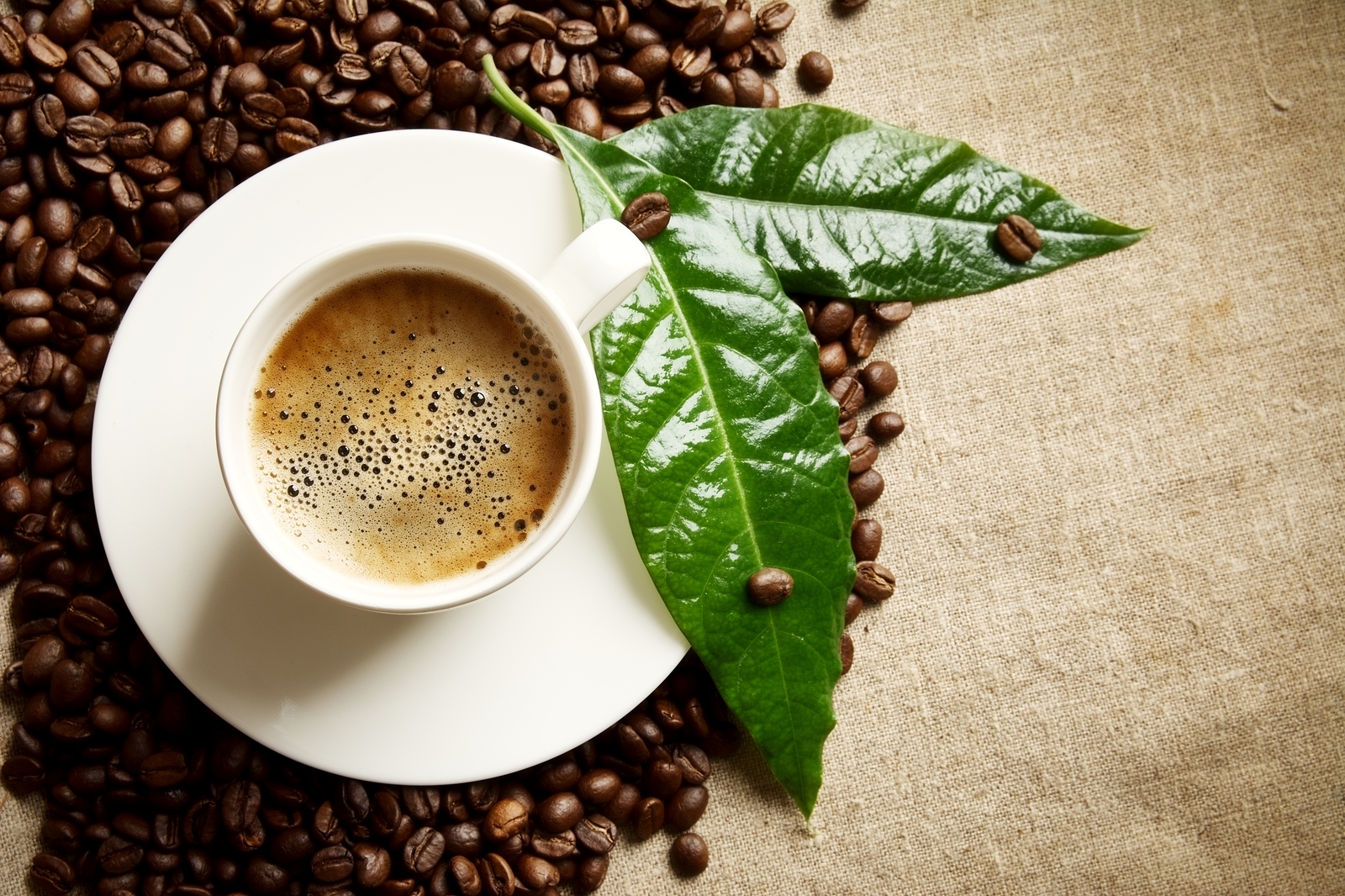I love opening people’s eyes about the lymphatic system, because I really don’t think it’s talked about enough, and keeping it healthy and functioning well is one of the best things you can do for your health.
Like Cinderella, the lymphatic system labors quietly in the shadows to clean up the mess that is regularly made by virtually all the other systems of the body. Often regarded as a lesser sister to the circulatory system, the lymphatic system is actually a crucial player in your body’s ability to ward off disease and heal from injury.
The lymphatic system is more recognized by doctors in Europe and in the Eastern world for its importance in preventive health care. In these parts of the world, there is a much better understanding of how lymphatic function supports every other system in the body, including the immune, digestive, detoxification and nervous systems. In fact, many believe that poor lymphatic health underlies a host of conditions, from cellulite to cancer. Recent research has also shown that the lymphatic system has important connections to cognition and brain health, which may have implications for Alzheimer’s and other neurodegenerative diseases.
In America, our practitioners don’t really think much about the lymphatic system until something goes noticeably wrong — usually when infection causes a swollen lymph node, or worse, when we develop cancer in a lymphatic gland, or cancer elsewhere that metastasizes through the lymphatic vessels. Lymphoma is a group of related cancers of the lymphocytes.
The reality is that you have twice as much lymph (the fluid circulated by the lymphatic system) in your body as blood. Lymph continuously bathes each cell and drains away the detritus in a circulatory system powered only by your breathing and movement. If the movement of the lymph stopped entirely, you would die in a matter of hours.
Most of us don’t need to worry about anything that extreme! But what can you do to ensure your lymphatic system stays healthy, for your overall well-being?
There are a number of natural ways to support lymphatic function that should be part of every woman’s health habits. Let’s start by exploring this amazing system.
Anatomy of the Lymphatic System
The first thing to understand about your lymphatic system is just how vast it is. This might seem a little complicated at first, but trust me, you’ll be glad you know!
Like the circulatory system that supplies blood, the network of lymph vessels serves almost every cell in your body.
Strung along the lymph vessels like pearls knotted on a string, the lymph nodes serve as a series of cleaning filters. Lymphatic fluid percolates through the nodes, being purified and immunologically boosted at every stage.
The lymph vessels and nodes are both made of lymph tissue, but so are many other parts of the body.
One of the most crucial functions of lymph tissue is generating and storing white blood cells, the types of blood cells that help us fight infection. The lymphatic system also contains bone marrow, the spleen, our tonsils, and the thymus gland.
Interestingly, the largest concentration of lymph tissue in the body surrounds the intestines. Called gut-associated lymphatic tissue, or GALT, this tissue is the guardian of this largest gateway through the body’s defenses, and it actively separates desirable nutrients from undesirable pathogens, helping to mount a defense whenever needed. With everything we know today about the importance of protecting gut health, you can start to see why the lymphatic system is so important!
The Flow of Lymph Fluid
The lymphatic system’s primary function is to isolate infection and cellular detritus from the rest of the body and then deal with it.
Imagine you are looking at a handful of living cells through a microscope. A capillary (the smallest blood vessel) delivers blood with its oxygen and nutrients. The local cells use these nutrients and excrete waste. There may be pathogens or antigens present that create an immune response, leaving dead cells and perhaps live infection.
Some of the blood and waste products are picked up by tiny veins. But much of the vascular fluid and waste — and hopefully all of the live infection — is picked up by tiny lymph vessels. This process is happening all throughout the body, all the time.
Like tributaries trickling into a stream that feeds a slow-moving river, the lymphatic system transports lymph fluid through ever-widening vessels, moving it through 500 filtration and collection points — your lymph nodes.
At each successive node the lymph fluid is filtered, and bacteria is removed. If lymph fluid is blocked in one lymph node it will usually take a detour, but when blockage is extreme it can cause the lymph fluid to back up and cause swelling in the surrounding tissue, a condition known as lymphedema.
The far-reaching lymph vessels merge at certain points to form lymphatic trunks. You have six major “lymph trunks” in your body, each responsible for draining filtered fluid from one region of the body.
Amazingly, the lymphatic system has no central pump; instead, it depends on muscle contraction and manual manipulation to move fluid.
Deep breathing is another essential way we can enhance movement of lymph through our bodies.
And importantly, the organs of elimination (skin, kidney, liver, bladder, small and large intestines) need to be functioning well so that the lymph does not become overwhelmed with waste products.
If the lymphatic system gets blocked or overrun (due to illness, surgery, toxic overload, or lack of activity), lymph fluid backs up. This can cause swelling, joint pain, nausea and fatigue. Stagnant lymph may be stored within nodes for a long period of time but eventually it becomes too toxic for the body to handle well.
Negative Effects of Chronic Lymph Blockages
All things in nature have a natural progression; when this motion is inhibited or jammed, concerns arise — and when it occurs in your lymph system, you feel it quickly!
Think again of a river: a healthy river runs clean and clear. A brackish river chugs along, thick with soot and silt that gets snagged, pocketing pollution in small pools along the way. Eventually, that sluggish river can become a breeding ground for bacteria and disease. The same is true for your lymphatic system.
Because lymph cleanses just about every cell in your body, symptoms of chronic lymph blockage are diverse!
Symptoms can include worsened allergies and food sensitivities, frequent cold and flu infections, joint pain, headaches and migraines, menstrual cramps, arthritis, fibrocystic breasts, breast tenderness, sinusitis, loss of appetite and GI issues, muscle cramping, tissue swelling, fatigue, mental fuzziness, mood irregularities, depression, parasites, skin breakouts, acne, and cellulite.
In general, you may feel tired and toxic, with a heaviness in your abdomen. In Chinese medicine, practitioners call this an “excessive dampness” that undermines your whole health.
Stagnant lymph can also interfere with the system’s ability to cleanse more potentially hazardous concerns, such as bacteria and cancerous or diseased cells from organ tissue. Viral infections, bacteria, and cancerous or mutagenic cells move through the lymph fluid, where they are targeted and destroyed in the lymph nodes — but only if the system is up to the task!
Where Do Lymph Nodes Come In?
Even if you don’t know much about the lymphatic system, you’re probably somewhat familiar with lymph nodes– the small, bean-shaped pockets that sometimes become noticeably swollen when you’re fighting an infection.
Lymph nodes are interspersed along the lymph network almost everywhere from your nose to your knees.
Lymph nodes counteract infection by filtering the lymph fluid, engulfing and removing any bacteria and foreign substances identified. Once a particular pathogen is detected, lymph nodes help customize antibodies to neutralize it.
Swelling in certain node sites generally indicates an infection in the part of the body drained by those nodes. It’s a good sign when you develop swollen glands; it means your lymphatic system is doing its job! (However, if swollen lymph nodes persist, you should consult with your physician).
The Role of the Spleen
The largest organ in your lymph system, your spleen is actually like a big lymph node, except that it filters your blood rather than your lymph fluid.
The spleen houses a concentrated amount of immune cells and is designed to bring lymphocytes into contact with the blood, making it a major player in your ability to ward off blood-borne diseases and antigens. The spleen also removes worn-out red and white blood cells, platelets, and any other hazardous blood-borne debris.
An enlarged spleen, which can be a symptom of mononucleosis or the Epstein–Barr virus, is prone to injury and should be taken seriously.
In our culture, the spleen is sometimes removed if its function declines or persistent swelling is a concern. A swollen spleen places a patient at a higher risk for hemorrhage (if it ruptures), so some doctors decide to remove a suboptimal spleen in order to avoid the risk.
In Eastern cultures, where the spleen and the lymph system are taken much more seriously, this is tantamount to clipping a bird’s wings. The bird will not die, but it will not fly as high again.
In Chinese medicine the spleen governs the blood, the great nourisher of life. Without the guardianship of the spleen, the blood is weakened, can become either blocked or dilute, and has more difficulty supporting the rest of the organs.
I often hear my patients say, “You can live without your spleen.” My response is usually, “Yes, but how well?” Of course, if you must undergo spleen removal you should feel confident that your other organs can compensate for your lost immunity. But if you have a choice, I always suggest making your decision with the understanding that the spleen does exist for a reason. It does not operate in a void, and surgically removing it usually does have long-term immunological consequences.
If you must do so, it’s important to then support the rest of your immune system more carefully in response.
In my experience, most spleen concerns can be treated with an alternative protocol that includes a lot of rest, supplements, and supportive enzymes. As long as you are not endangering a swollen spleen with reckless activities, taking the time to heal it from the inside out is preferable to having it yanked.
For a long time tonsils were treated with the same indifference (the lymph system just can’t get any respect!). Now, it’s generally accepted that it’s healthier to keep them if you can.
In fact, I don’t think any organ in the body should ever be treated as disposable. That kind of thinking is based on the fractured Western paradigm. But of course, all of the systems of the body are interconnected! Think of it this way – if you didn’t have a road map or welcome signs, would the landscape show any hint that you’d just crossed a state line? Nature respects few man-made boundaries, and when it comes to the map of your body, this is evident in the web that connects organ tissue to the lymphatic system and the lymphatic system to the immune, circulatory, endocrine, and digestive systems.
The Lymphatic System, Digestion and Elimination
As you read above, so much of the lymph tissue is associated with the gut that it has its own acronym: GALT (gut-associated lymphoid tissue).
Lymphatic tissue is where much of our immunity originates, and because the digestive tract is a main path of entry for offensive substances (bacteria, allergens, heavy metals, molds, fungi, chemicals, trans fats), many lines of defense are necessary for the gut.
The agents involved in digestion — enzymes, acids, and intestinal flora — do away with many of the pathogens that try to invade our systems. Those that make it through are taken up and acted upon by the GALT.
The GALT itself is a kind of tasting room for pathogens. The ones that survive the initial pass of digestion get sampled by receptors in the GALT, which coordinate an immune response (including mucus production). Anyone who lacks the enzymes to digest dairy is familiar with a GALT-dictated immune response.
So, the GALT receives information from the microenvironment of the intestines in the form of which pathogenic agents get through. It then decides which of these deserve an allergic response, calling upon the immune and endocrine systems to facilitate. In this way, the GALT tissue becomes its own command center, which is one reason many practitioners call the gut the “second brain.” For more on this topic, read The Second Brain, by Michael Gershon.
Healthy GALT function generally inhibits allergic responses and decreases food sensitivity — but this is complicated and often relies on the status of the intestinal flora and other factors. Suffice it to say that the healthier your gut-associated lymph tissue, the less sensitive you are likely to be to food-borne bacteria and chemicals.
GI issues compromise the lymphatic system’s ability to do its job. If the digestive tract is suboptimal due to food sensitivities, parasites or stress, the flow of lymph and chyle will also be diminished. This can cause nausea and toxicity, exacerbating any GI concerns like diarrhea or constipation. It may also play a part in the appearance of cellulite.
The Lymphatic System and Cellulite
When I bring up the connection between the lymphatic system and cellulite to my patients, many of them are surprised!
Cellulite and “saddle bags” along the thighs are partially the result of impaired lymph flow to certain areas, causing immobilized pockets of fat and trapping toxins. Over 90% of women have some form of cellulite resulting from weight gain, a genetic predisposition, or inactivity.
Cellulite begins when numerous fat cells collect in one area (generally the buttocks, thighs and upper arms in women), causing the skin to bulge. The dimpling effect occurs when the connective fibers in the skin pull down in areas where body fat is pushing up. Toxins and lymph fluid accumulate in the pockets of fat. Improving the circulation of lymph in areas prone to cellulite and reducing toxic burden are two successful ways to diminish cellulite from the inside out.
Liposuction, creams, and wraps on the other hand, may reduce the appearance of cellulite but do not keep it from coming back. Invasive procedures tend to increase inflammation in the area and strain the connective tissue, which can make the situation worse over time.
Lymphatic Massage
Because lymph fluid moves slowly without aid of its own pump, inactivity can seriously restrict its flow. Muscular contraction through exercise and deep breathing is the primary means by which our lymph circulates, but lymphatic massage and drainage provide another helpful option.
In Europe, patients often receive a special massage called lymph therapy or lymph drainage before undergoing surgery. This method of treatment was made popular in the US by the Danish doctor, Dr. Emil Vodder, as an effective treatment for lymphedema. Practitioners believe that it significantly improves healing by readying the system for recovery. For more information, visit Dr. Vodder’s educational website.
On an everyday basis, regular lymph massage (particularly around the abdomen, axillary nodes, and breast) can be great preventive health maintenance. There are many ways to practice lymph massage, and I recommend that you visit a certified massage therapist to learn more.
How to Rejuvenate Your Lymphatic System and Keep It Healthy
As you can see, the lymphatic system works steadily to keep you clean and well.
As the lymphatic system gradually begins to get some of the respect it deserves, some research is exploring drug development avenues that will target this powerful system. That said, there are all kinds of natural, holistic methods for improving and maintaining flow and lymphatic health.
The nutritional and lifestyle guidelines we offer in our articles will go a long way toward reducing the overall “body sludge” your lymphatic system must sweep away. In addition, I recommend the following steps to ensure that your lymph remains clear and unimpeded. Whether you have symptoms or not (or whether or not they’ve been linked to your lymphatic system), every woman can benefit in some way from these techniques.
- Clean up your diet. Reduce your body’s toxic burden by avoiding processed food, eating organic when possible, and eliminating refined sugar.
- Eat naturally red foods, and raw fruits and veggies. Ayurvedic medicine recommends foods that are naturally red (think cranberries, pomegranates, and cherries) in order to improve lymphatic flow. Raw fruits and vegetables will also help the lymphatic system with its duties of detoxification and elimination.
- Get tested for heavy metal exposure. Lead and mercury are very common in the US. The idea here is that the less waste your lymph has to deal with, the more easily it will flow.
- Consider a regular nutritional detox and colon cleanse. This kind of cleanse, supported by liver enzymes, will ease your liver and kidney burden, which in turn will decrease pressure on your spleen. Even a two week Quick-Cleanse can do wonders.
- Investigate any food sensitivities or allergies that may be affecting your digestion. Take a medical-grade multivitamin to support your cellular function, digestion, and elimination. Look into probiotic supplements to help maintain a healthy ratio of intestinal flora. Experiment with a hypoallergenic diet for two weeks to cleanse your system of moderate food irritants. Deal with any troublesome GI issues, including parasites. Read our article on Irritable Bowel Syndrome (IBS) and, if necessary, talk to your practitioner about relevant tests.
- Drink plenty of purified or filtered water – at least six to eight 8 oz. glasses per day. Your body needs hydration to keep the fluids running!
- Consider regular visits to a lymph drainage massage therapist. This is a wonderful and healthy way to pamper yourself (and your internal organs). This is especially invaluable during a detox.
- Practice deep breathing. Breathing deeply from the diaphragm, not shallowly from the chest, and through the nose rather than the mouth, is one of the best ways to move lymph fluid through your body.
- Get regular physical exercise. Jumping on a rebounder, or mini-trampoline, just five minutes a day is a great way to get your lymph system pumping. Walking, stretching, t’ai chi, yoga, Pilates, and other moderate activities are helpful, too — especially if you do them every day. Or find an activity that suits you. I love ballroom dancing; other women are passionate about swimming. What’s important is that you make it a regular and joy-inducing part of your life.
- Don’t be afraid to sweat! A weekly sauna or steam bath is a pleasant way to facilitate a healthy sweat, and sweating helps detoxify the body and so supports lymphatic function. Avoid aluminum-based antiperspirants (they block sweating and add to your toxic load) and choose natural deodorants instead.
- Avoid restrictive clothing that press on your lymph nodes. Underwires and bras that are too tight, jeans, and skirts can impede lymph flow. Try to go bra-free for at least 12 hours a day, and don’t sleep in one. If this is uncomfortable for you, consider buying a stretchy camisole.
- If you are concerned about cellulite, massaging those specific areas and the lymph nodes in the groin on a daily basis can be helpful.
- Consider acupuncture. Chinese medical doctors are far ahead of their Western counterparts when it comes to “unsticking” the lymph system. As a treatment or preventative measure, acupuncture can be a great way to keep things moving. It can also help alleviate discomfort that may arise while you are detoxing.
- Examine your emotional issues. Sometimes we get stuck in a particular pattern of stress that reduces our capacity to make positive changes. Your lymphatic system can become blocked when you are feeling stuck or unable to express yourself. Remember that your life, too, is a progression, and “our biography becomes our biology.” If you find the same situations arising over and over, you may want to take a closer look. Discuss any areas that feel stagnant or obtrusive with a friend, partner, therapist or trusted religious advisor. You may find that as your lymph system unbinds, so does your spirit.
I hope this article has served to reveal the hidden beauty of your lymphatic system, and inspires you to give more time to its care. Remember that support for your body is all-inclusive, not fragmented into specialized body parts as so many doctors would have us believe. Taking the time to honor and support your lesser-known systems will have a far-reaching, life enhancing effect. So focus on purifying and loosening the tides within and let your river run freely!







